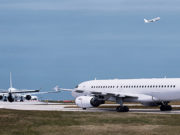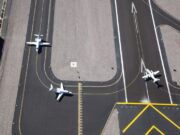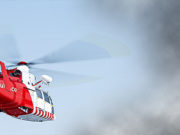
The worldwide aviation accident rate for scheduled commercial operations declined 9.8 percent in 2021 from the previous year, from 2.14 per million departures to 1.93 per million, and associated fatalities decreased by 66 percent, the International Civil Aviation Organization (ICAO) says.
In its 2022 Safety Report, issued Aug. 18, ICAO said passenger traffic increased in 2021, with 2.3 billion passengers worldwide, about half of the 4.5 billion recorded in 2019, before the COVID-19 pandemic, but up from the 1.8 billion recorded in 2020, which represented a 60 percent decline from the previous year.
The number of scheduled commercial flight departures in 2021 was 24.92 million, up 11 percent from the 22.5 million recorded in 2020 but well below the 38.09 million in 2019.
Forty-eight accidents involving scheduled commercial flights were reported in both 2021 and 2020; in each year, four of those accidents involved fatalities — 104 fatalities in 2021 and 298 in 2020.
“These outcomes are very positive and encouraging and reconfirm that air transport is the safest mode of transport, even during the current global circumstances,” ICAO Secretary General Juan Carlos Salazar said.
ICAO Council President Salvatore Sciacchitano added that the “positive safety performance being seen system wide is … due in part to the pandemic response and recovery recommendations set out by the ICAO Council’s Aviation Recovery Task Force (CART).”
Accident Categories
Of 2021’s four fatal accidents, two were classified as loss of control–in flight (LOC-I) accidents with a total of 72 fatalities, and two were controlled flight into or toward terrain (CFIT) accidents with 32 fatalities. In all four accidents, the airplanes were destroyed.
Of the year’s total of 48 accidents, turbulence encounters accounted for more injury accidents (11) than any other accident type.
ICAO identified five high-risk categories of accidents, basing the designation on actual fatalities, high fatality risk per accident, number of accidents and incidents, and results of a safety data analysis. The five categories are CFIT, LOC-I, midair collision, runway excursion and runway incursion.
The safety report said that, in 2021, those five categories represented all fatalities and fatal accidents, 10.4 percent of the total number of accidents and 17.4 percent of the accidents that destroyed airplanes or caused substantial damage.
Regional Breakdown
Regional data show that the highest accident rate — 10.67 accidents per million departures — was recorded in the Western and Central African region, and the lowest was recorded in the Mideast region, which had no accidents in 2021. The greatest number of accidents — 26 — was recorded in the North American, Central American and Caribbean region.
Two of the four fatal accidents occurred in the European and North Atlantic region, one in the Asia Pacific region and one in the Eastern and Southern African region, the report said.
Image: © Palladadesign | iStockphoto


